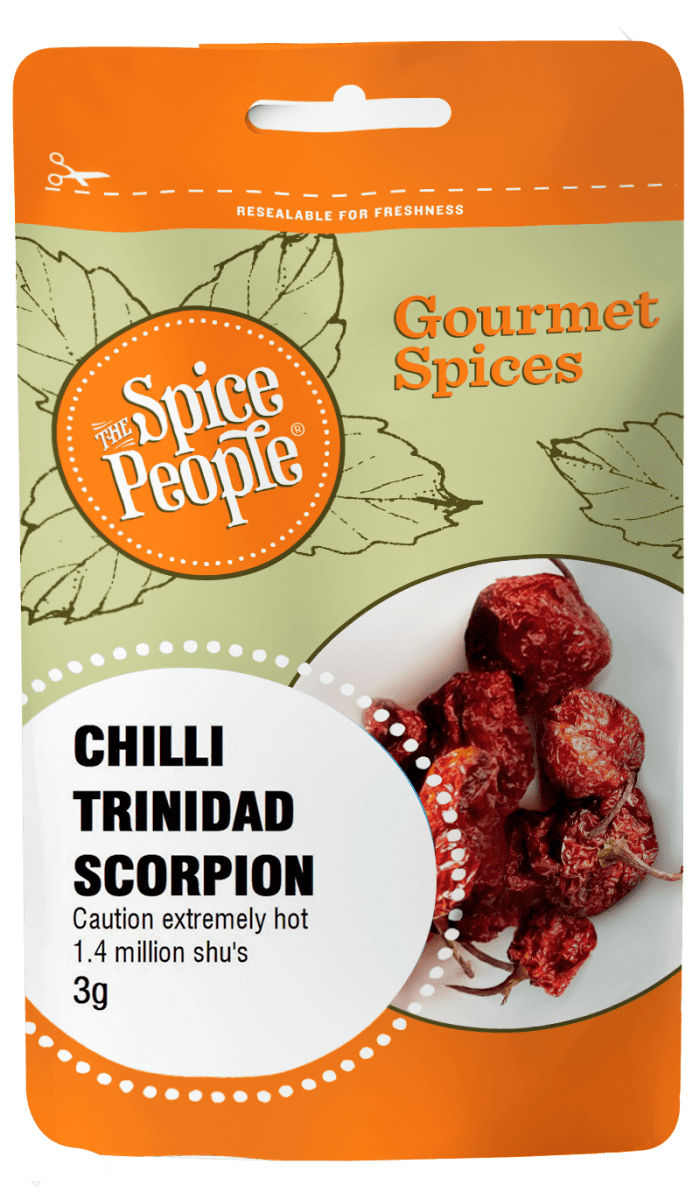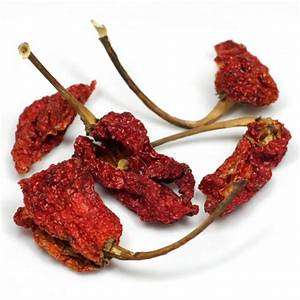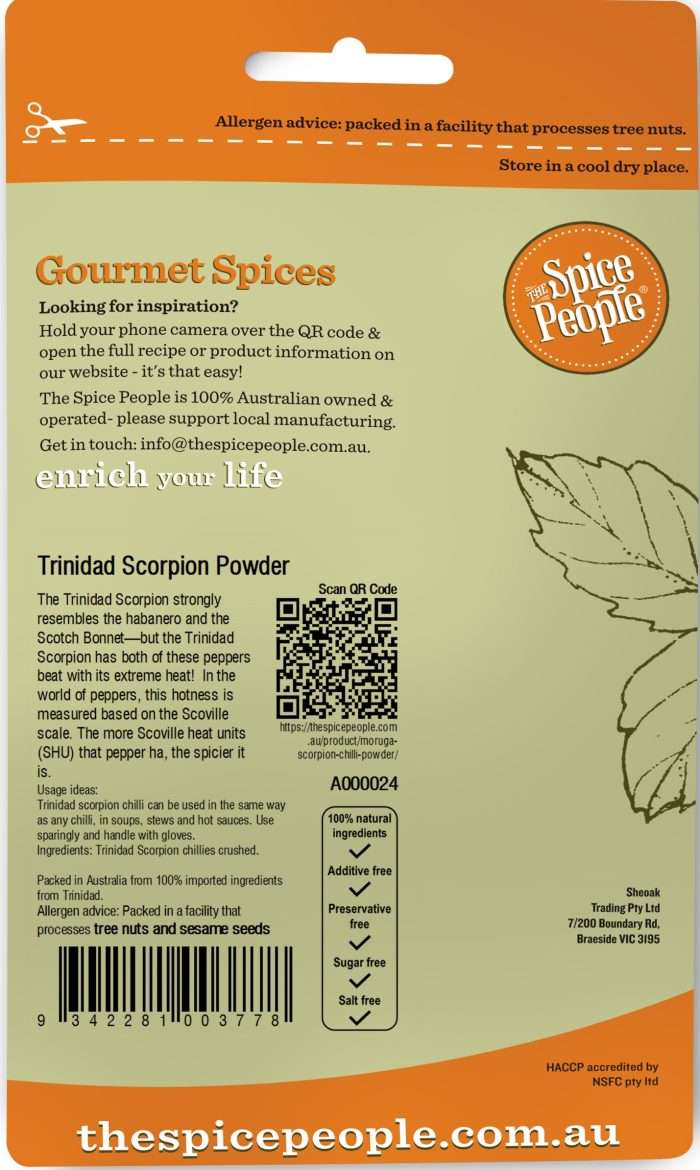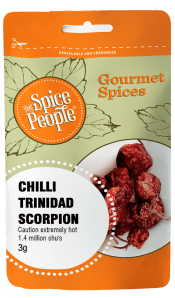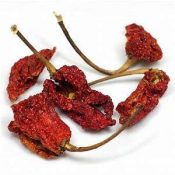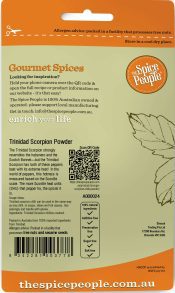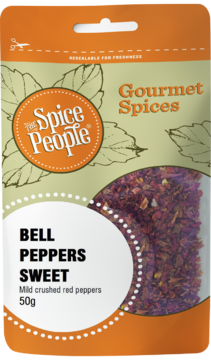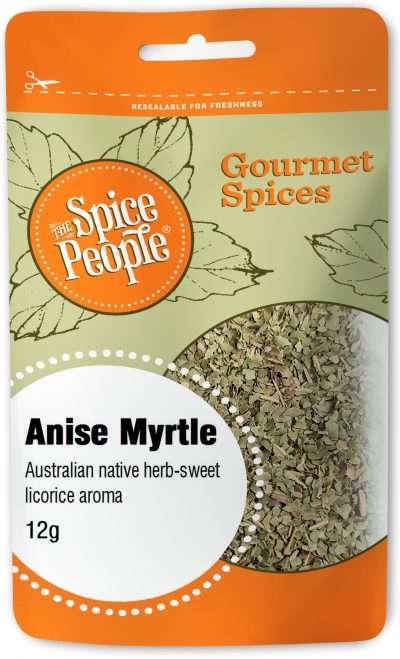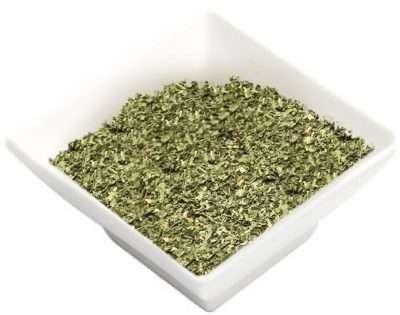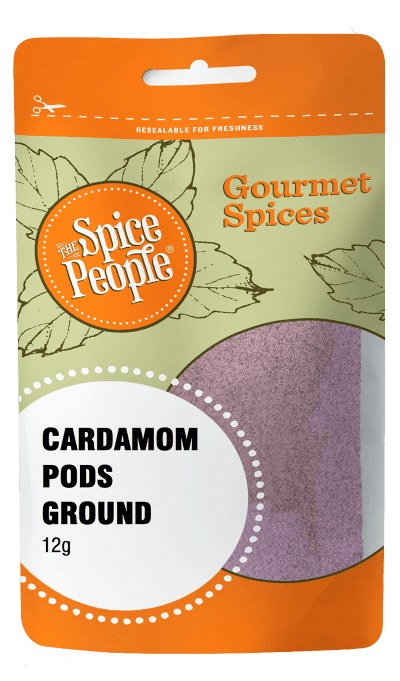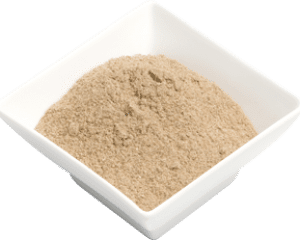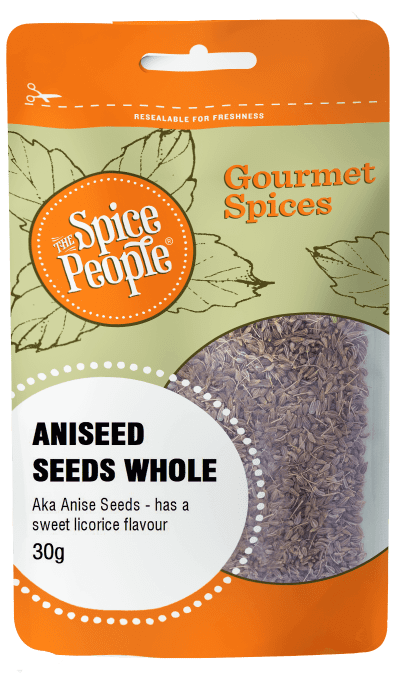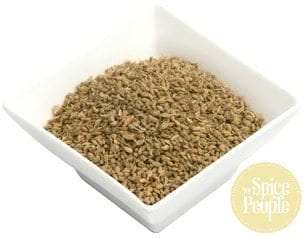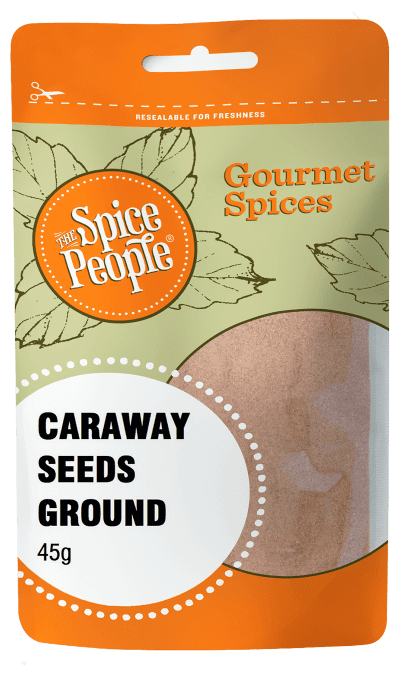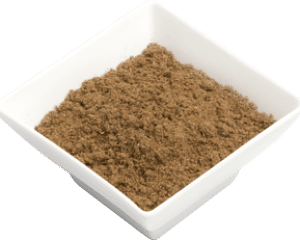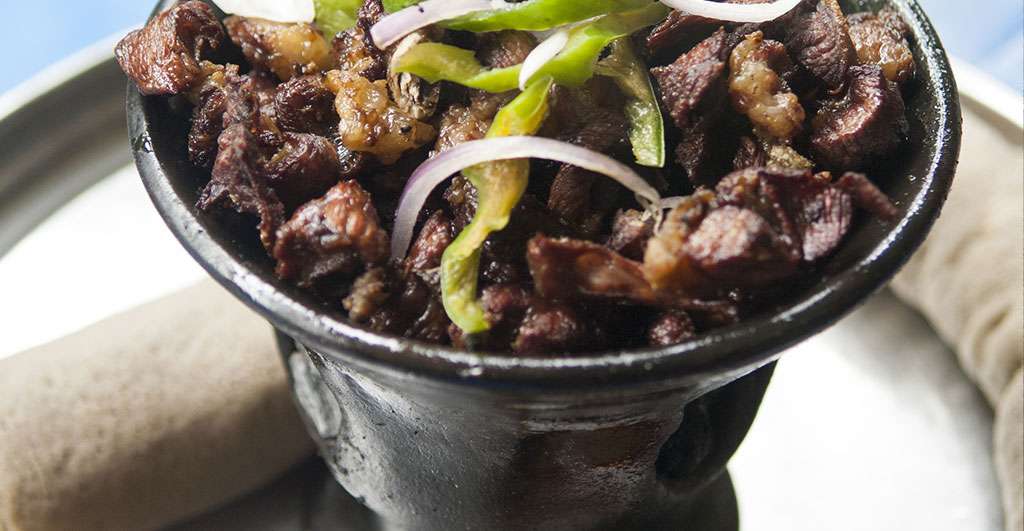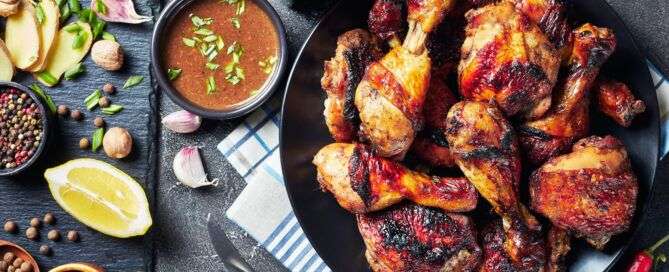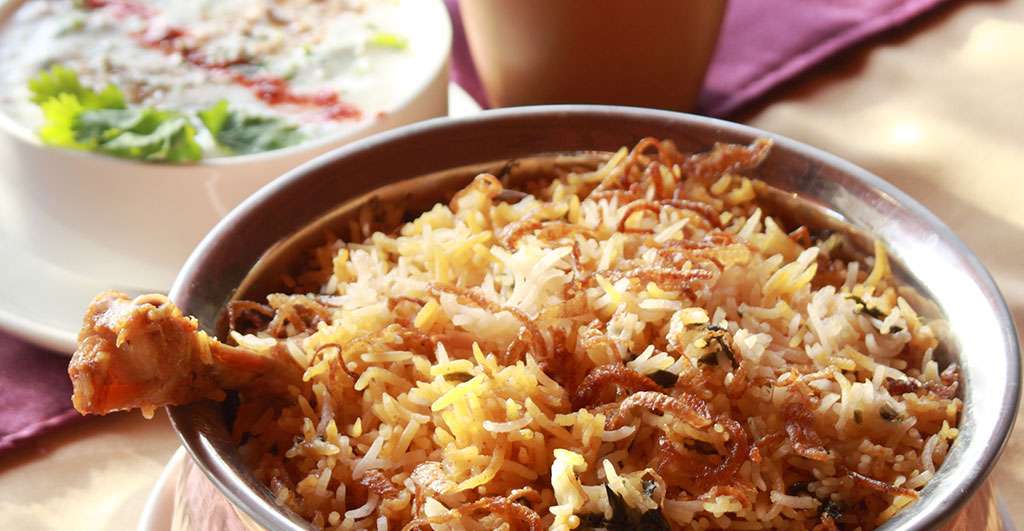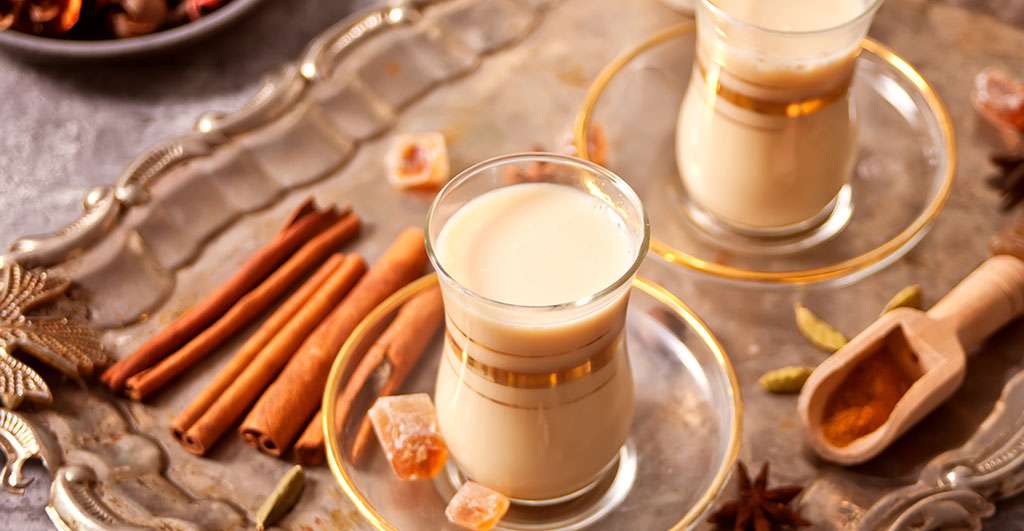Trinidad Scorpion Chilli – Caution, Extremely Hot Chillies – 3g
20 in stock
Product description
CAUTION WORLD’S NO #2 HOTTEST PEPPER The Trinidad Scorpion is a variety of the Capsicum Chinese species, which is the bonnet family of peppers. The Trinidad Scorpion strongly resembles the habanero and the Scotch Bonnet—but the Trinidad Scorpion has both of these peppers beat with its extreme heat! The only other pepper listed by the Guinness Book of World Records that beats the Trinidad Scorpion pepper is Carolina Reaper pepper. In the world of peppers, this hotness is measured based on the Scoville scale. The Trinidad Scorpion hottest chilies measure a whopping 1,500,00-2,009,231 SHU. The more Scoville heat units (SHU) that pepper has, the spicier it is. For example, the bell pepper has zero SHU, while jalapeño and chipotle peppers measure 10,000 SHU each. Its delicious flavor is great in BBQ and hot sauces, making it one of the most sought-after peppers by true Pepper Heads around the world.
Flavour Notes:
Clocking at a massive 1.5-2 million on the heat scoville scale, the Trinidad Scorpion has a warm peppery flavour with a mega heat hit!
Culinary Notes:
Due to their intense heat, only part of the pepper is needed at a time to give a big flavour and fieriness to a dish. Use to add a kick to curries, soups, stews, sauces or a homemade chilli sauce or jam.
Health Benefits:
All chillies contain capsaicin which is known to have many health benefits including boosting the immune system, eliminating inflammation, and helping with weight loss.
Some people are concerned that because these chillies are so hot, it could actually kill them. This is false. Although eating an extremely hot chili causes your pain receptors to react as if you are experiencing pain, it’s only an illusion. They won’t do any damage unless you have an allergy or an ulcer. You should not have a problem eating these chillies unless you know that spicy foods and hot peppers negatively affect your health.
If you don’t normally eat spicy foods, it’s probably not a great idea to go straight for a Carolina Reaper, trindad scorpion or ghost chilli. Instead, ease yourself into eating the Carolina Reaper by trying more mild peppers like the jalapeno first. But if you’re experimenting and discover you can’t take the heat, a glass of milk should help you recover.
Ingredients:
100% Trinidad Scorpion Pepper
Country of Origin:
Trinidad
Other Names or Spelling:
Trinidad Scorpion, Butch T pepper
How to use
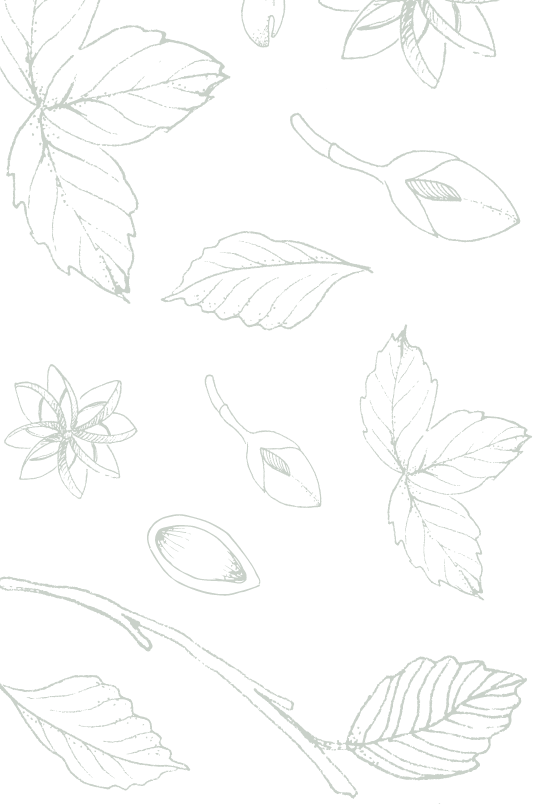


The Spice People FAQs





The Spice People FAQs


Other Spices you may like
Featured in






Join the Spice People to Get Started on Your Culinary Spice Journey!
Be the first to hear about our exclusive promotions, new product releases, recipes and more.
